Get step-by-step instructions on how to prune spirea. Learn the difference between spring and summer blooming spirea (and when to prune them!)
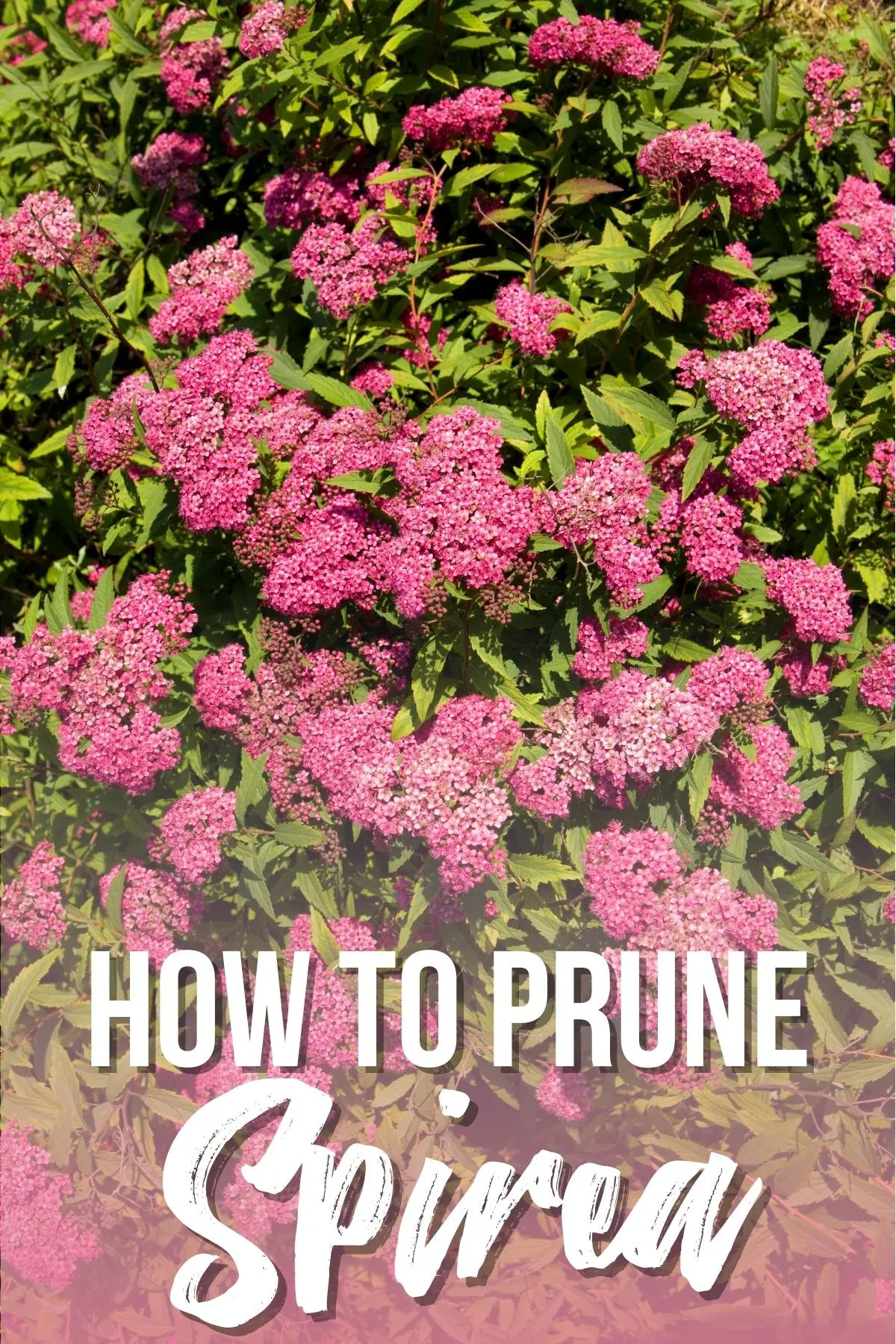
Spirea is deciduous shrub that will grace your garden with abundant flowers above their foliage. There are two different types of spirea, and knowing which species you have is important when it comes time to prune. If you give your shrub a trim at the wrong time, you could be cutting off the blooms for the following spring!
But don't worry if you don't know which type of spirea bushes you have! They're pretty easy to tell apart, just by looking at their growth habit and what time of year they bloom.
This post contains affiliate links for your convenience. Purchases made through these links may earn me a small commission at no additional cost to you.
When to Prune Old-Fashioned Spirea
There are several species of this variety, also known as spirea prunifolia, such as Vanhoutte Spirea and Bridal Wreath Spirea. They can grow four to eight feet tall and wide, with white flowers on long, arching branches that bloom from early to late spring.
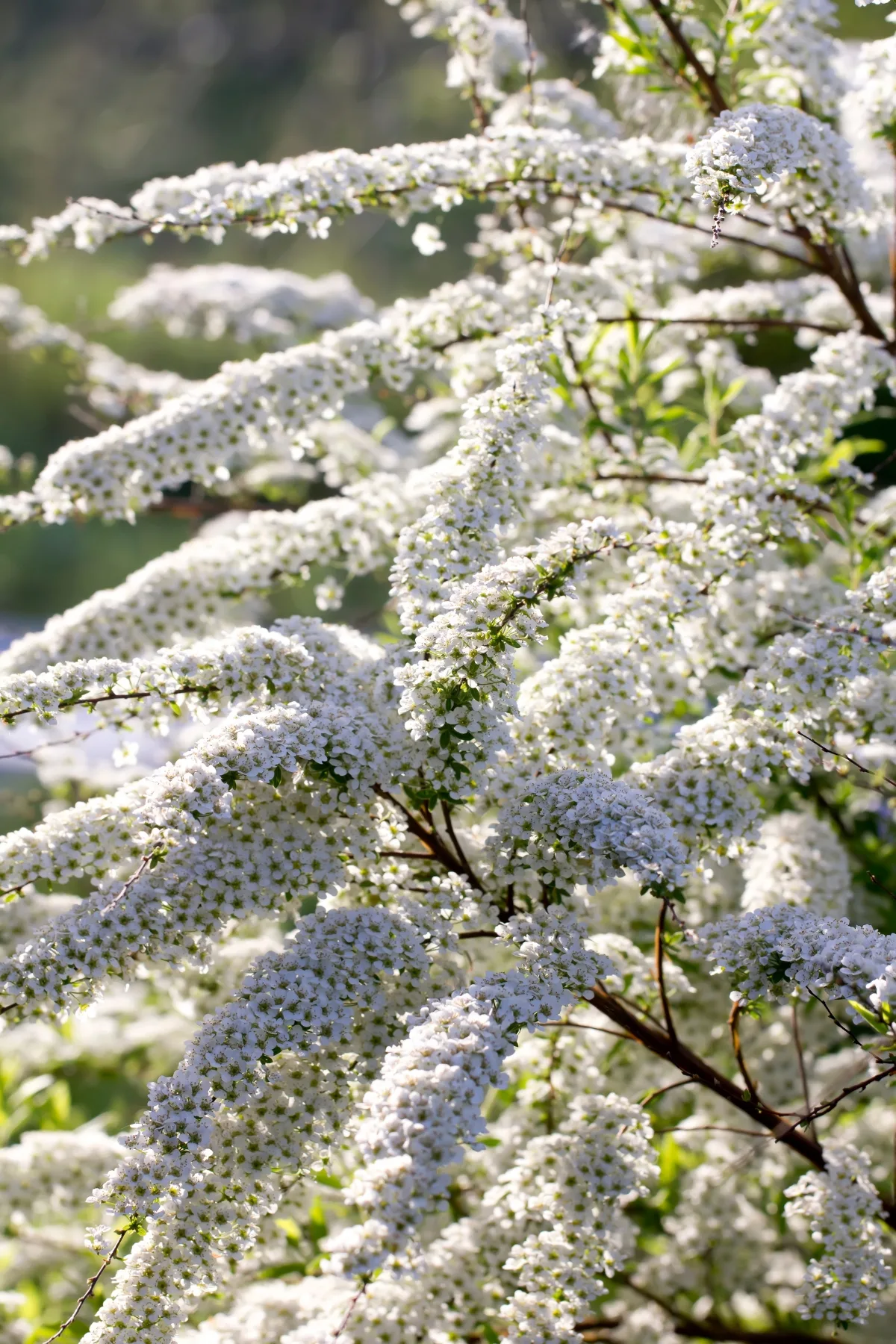
These flowers bloom on old wood, meaning that growth from the previous summer will set the buds for the following season. If you prune this type of spirea in winter, you won't get any blooms in spring!
The best time to prune these spring-flowering shrubs is right after it finishes blooming. This will give you plenty of time to cut off the dead blossoms and control the shape of the plant before it creates new leaves and sets buds for the following year.
You should only prune spring blooming spirea every couple of years to allow the graceful branches to cascade down to the ground. Annual pruning will keep the plant more upright, like this hedge border.
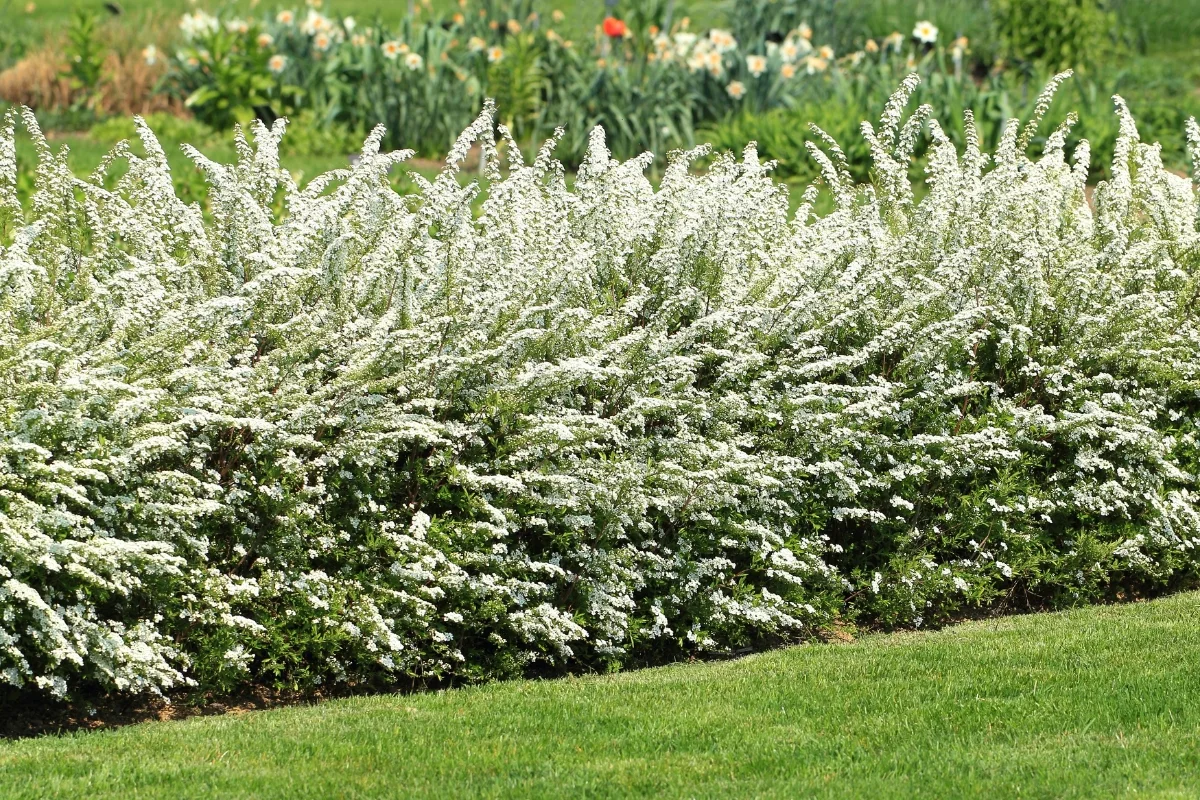
When to Prune Japanese Spirea
Summer-blooming spireas, or spiraea japonica, are popular smaller summer-flowering shrubs that bloom on new wood. The flowers bloom on the tips of the stems of new growth, so you won't cut off any buds if you give it a prune during the dormant season.
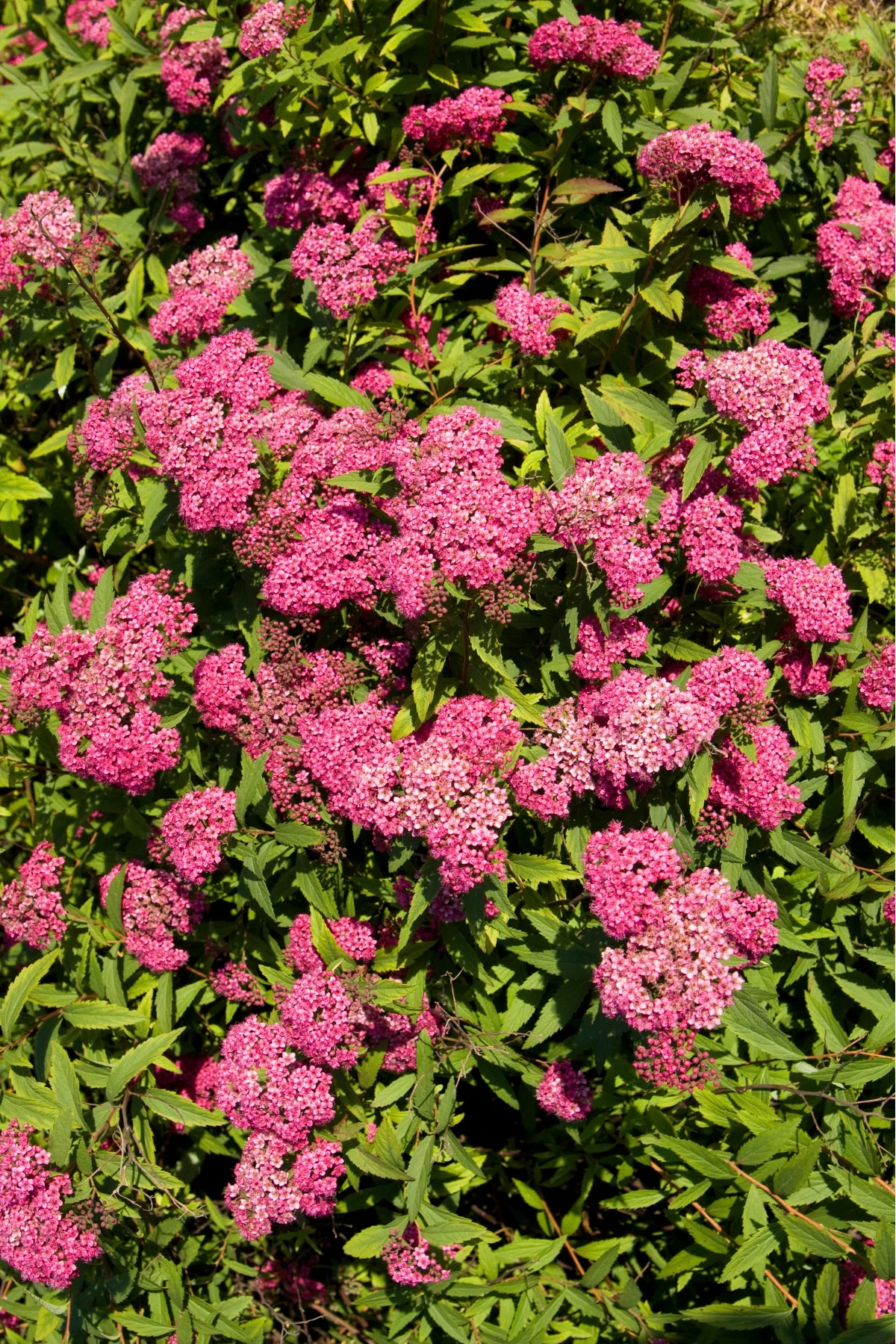
Common varieties include Little Princess, Goldmound and Magic Carpet, the latter of which is the type I'll be pruning today. It blooms with a flush of pink flowers in June that attracts butterflies!
Japanese spirea benefits from a hard prune in late winter or early spring, as well as a light pruning to remove the spent flowers and encourage it to bloom a second time in late summer.
When the flower heads start to turn brown like you see below, just trim those off to encourage reblooming.
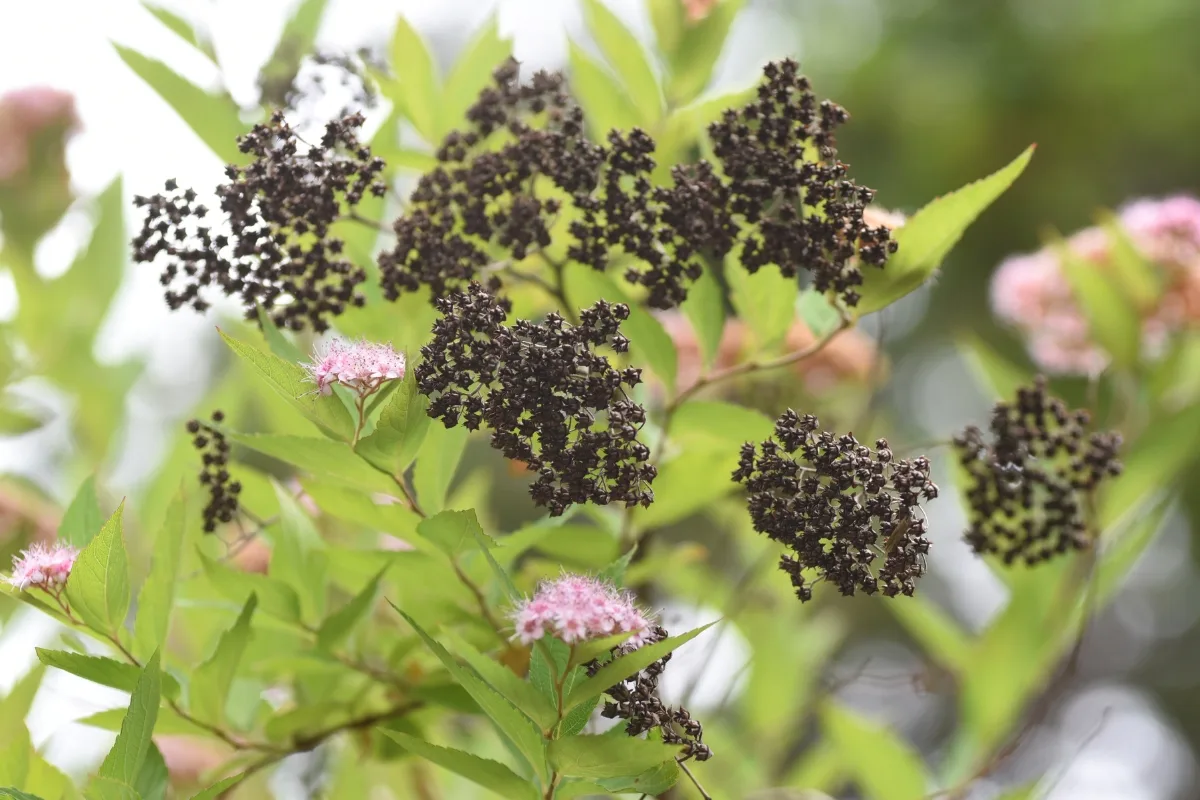
It's always a good idea to remove dead branches and thin stems to allow for better air flow and prevent fungal diseases such as powdery mildew. Here's how to do it!
How to Prune Japanese Spirea
I planted a trio of Magic Carpet Spirea a few years ago, after I cleared out this overgrown garden bed. It gets full sun, and I wanted something that would act as a small hedge to frame in this corner.
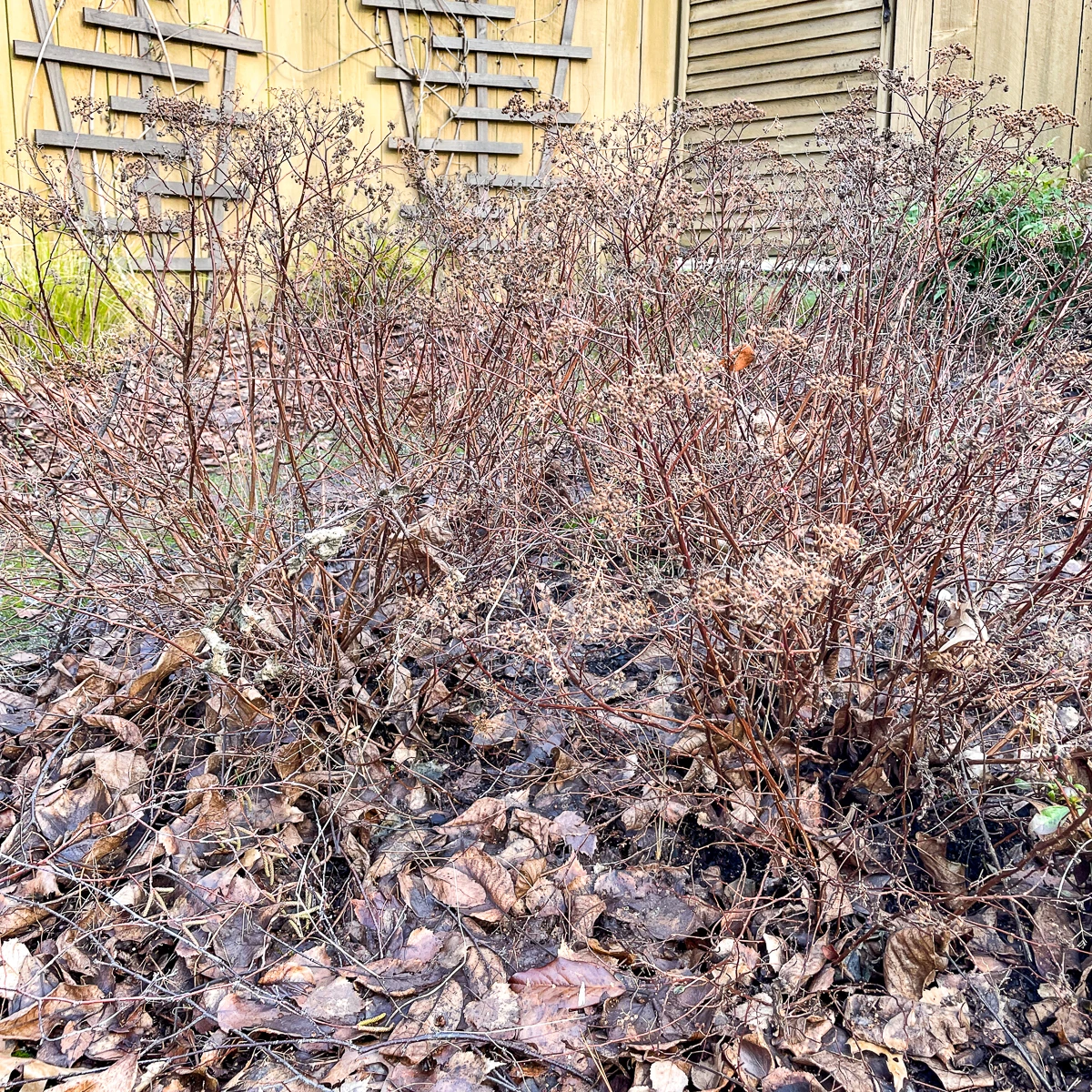
They were quite small when they were first planted, so I would just give them a quick trim to remove the spent blooms and let them continue growing. But now, they're getting pretty big and a little scraggly, so it's time to give them a renewal pruning!
I waited until we had a dry, sunny day in late January to tackle this project (not a frequent occurrence in Seattle!) We're in zone 8B, so we rarely get temperatures below freezing. There were already some buds on these plants, so I'm glad I got out there when I did!
Cut down old growth by a third
Start off using hedge trimmers and other pruning tools to lop off the top third of each shrub. This removes most of last year's weak growth and brings the plant back down to the stronger, woody stems. I always keep my trusty plastic tub nearby to toss all the clippings into!
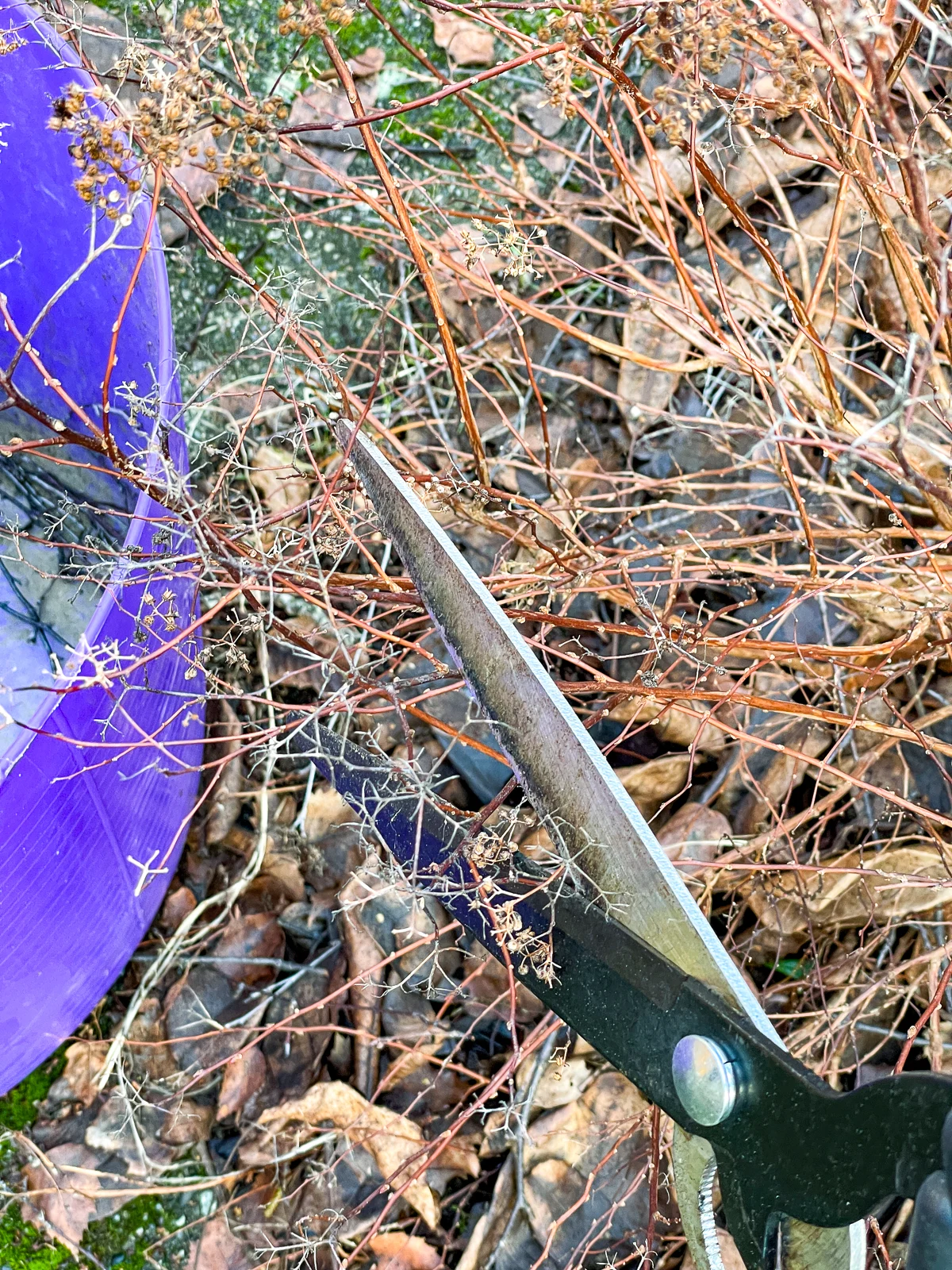
You can see the height difference between the pruned spirea in the front and the one in the back that still has last year's growth and old flower heads.
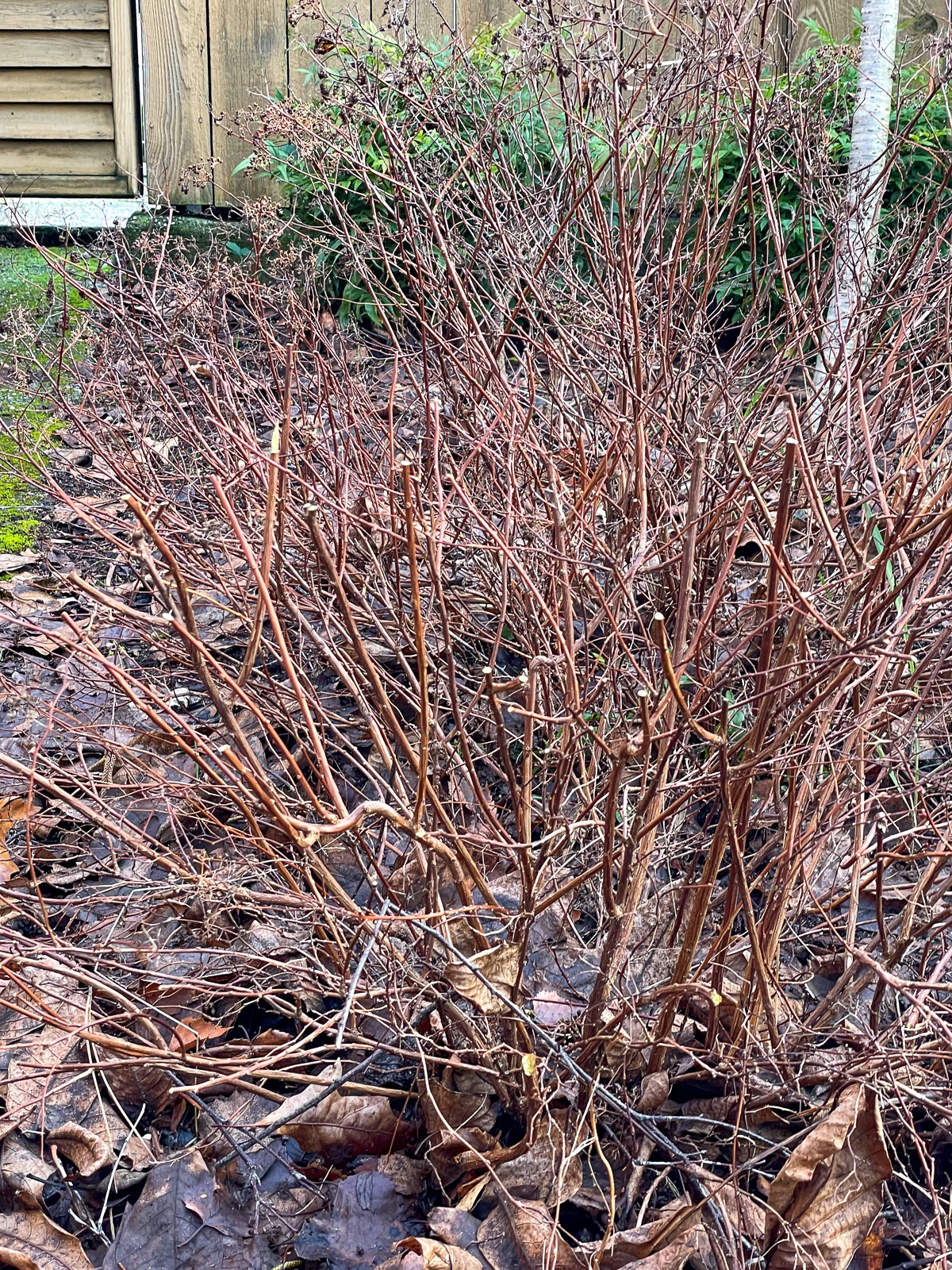
Cut out the lowest branches
After chopping off the tops, now it's time for some more precise pruning. I cleared away all the leaves and debris from underneath the shrubs with a small rake.
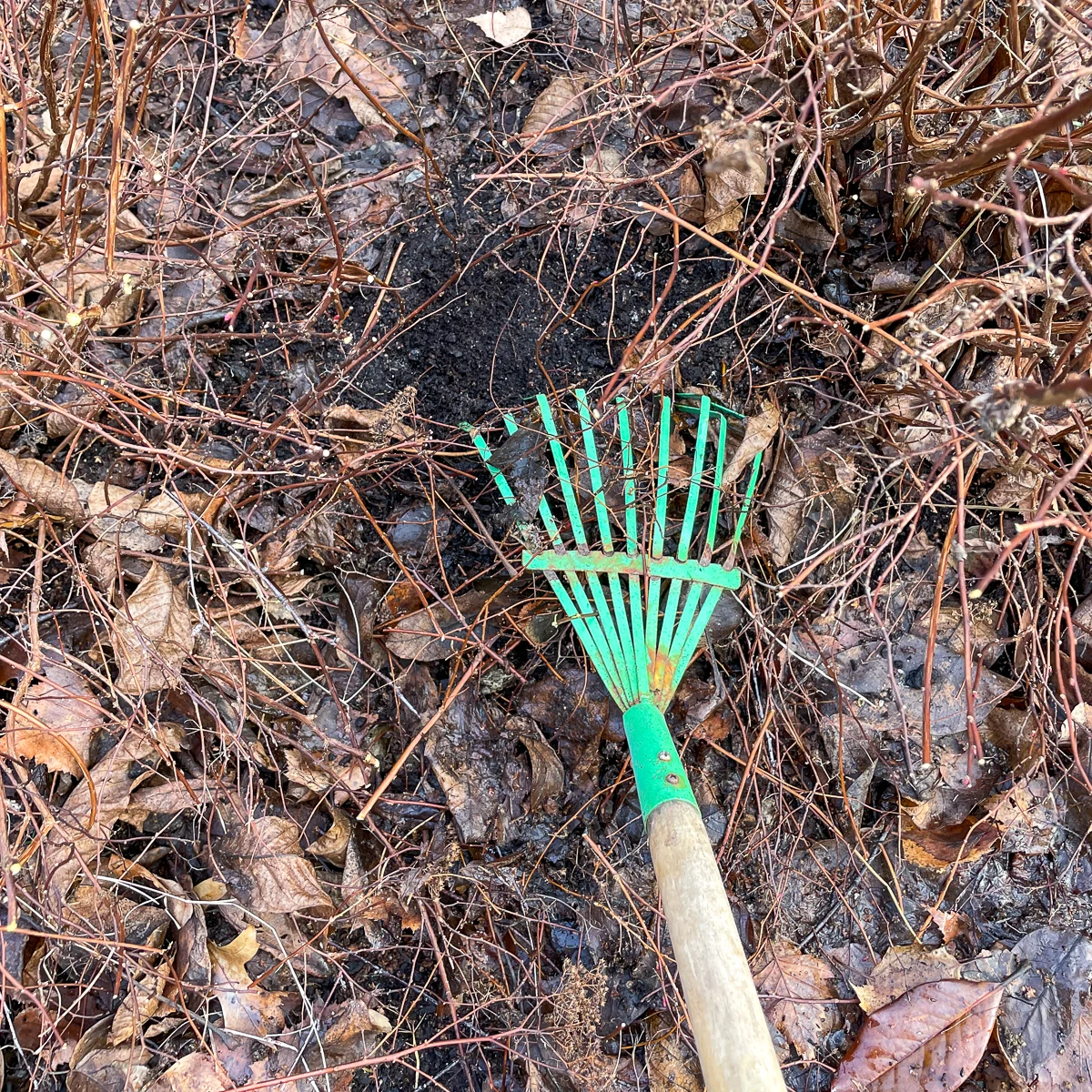
That made it a lot easier to see what we're dealing with!

Spirea can spread by putting down roots wherever a branch touches the ground. But if you want your shrubs to stay compact, you need to prune out the lowest branches. I want to plant annuals along the border here, so I cut these branches back all the way to the ground.

This area is already looking much better with the lower branches cleaned up!
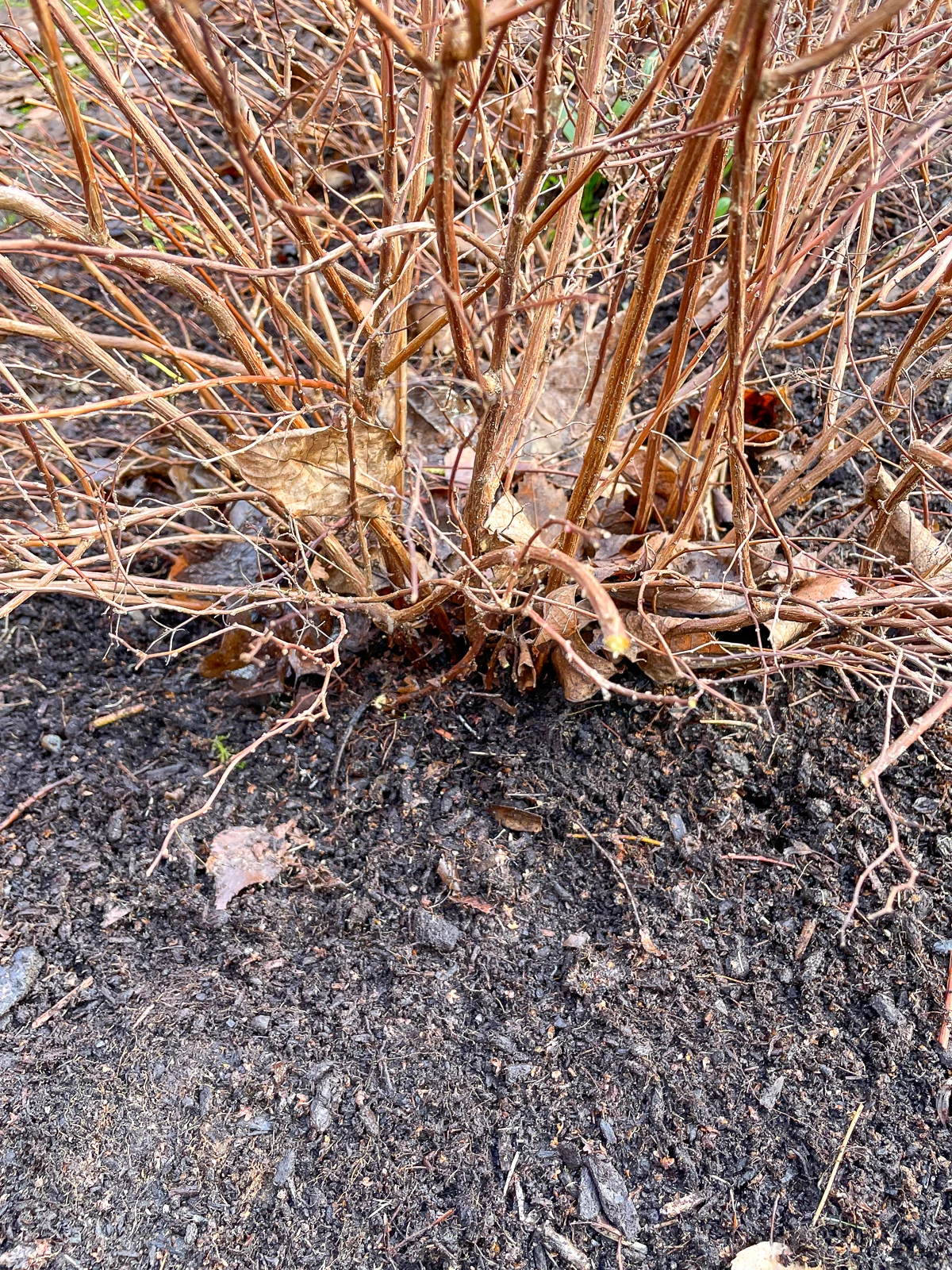
If you find branches that have roots growing in the middle where they touched the ground, you can cut them off the mother plant and transplant them elsewhere. This process is called ground layering, and it's an easy way to propagate spirea. This stem was accidentally mulched over last year, and sprouted roots all along its length. Yay for free plants!
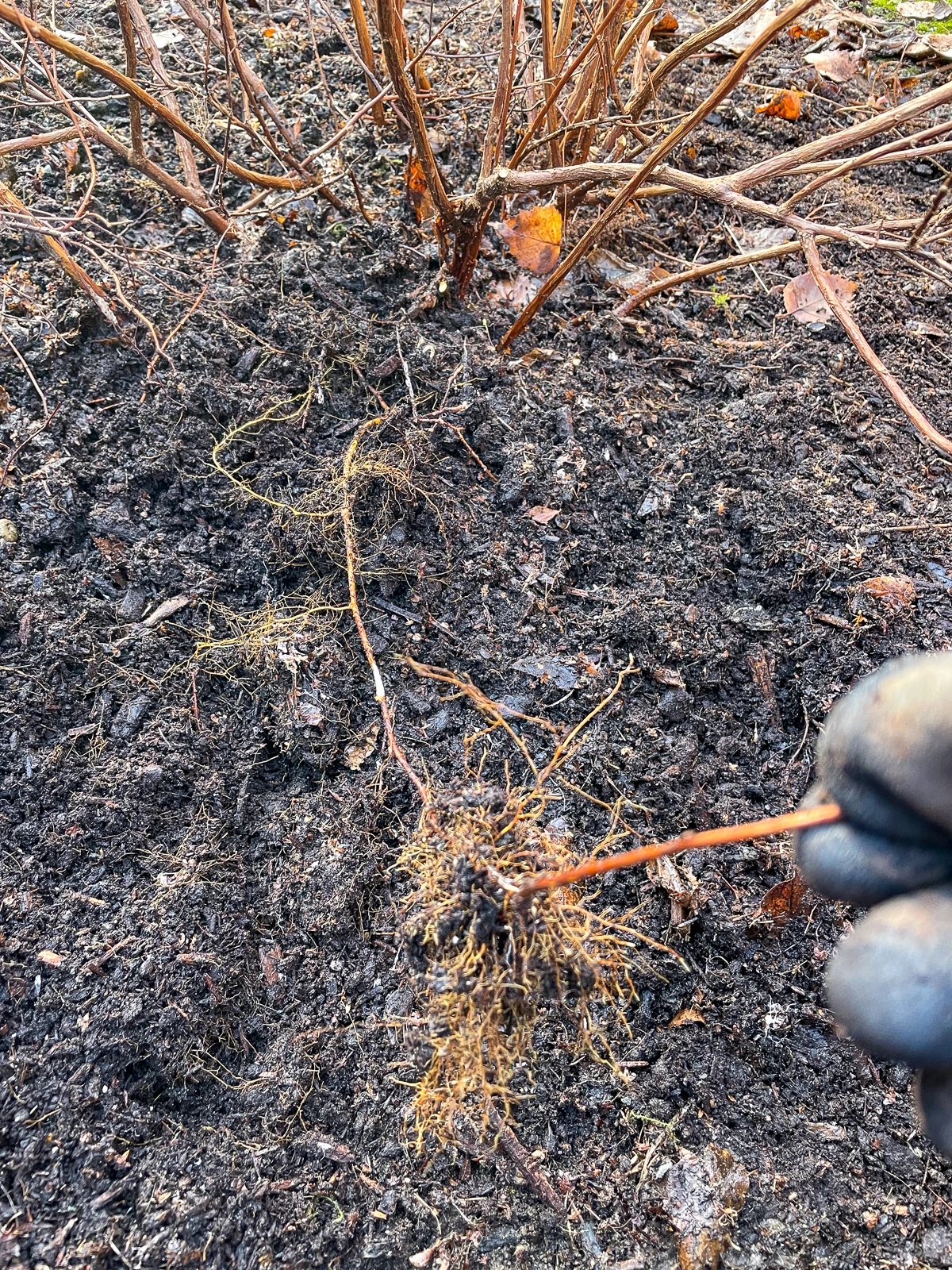
Cut out weak stems
Once you start clearing away branches and debris, you can really start to see the structure of the plant. There are some strong, sturdy stems and a bunch of weak, spindly ones emerging from the base of the plant.

As a general rule of thumb, prune out any stems that are smaller in diameter than a pencil. Start with the weakest ones, and reevaluate as you go up in size. If there's one area that only has thin branches, keep the largest ones rather than hacking them all off and making your plant lopsided.
Also cut out any branches that are broken, crossing or rubbing against the larger ones, which can cause damage and disease.
If your spirea is starting to crowd out other plants, cut them back in that area to create more space. This poor azalea was half hidden underneath!
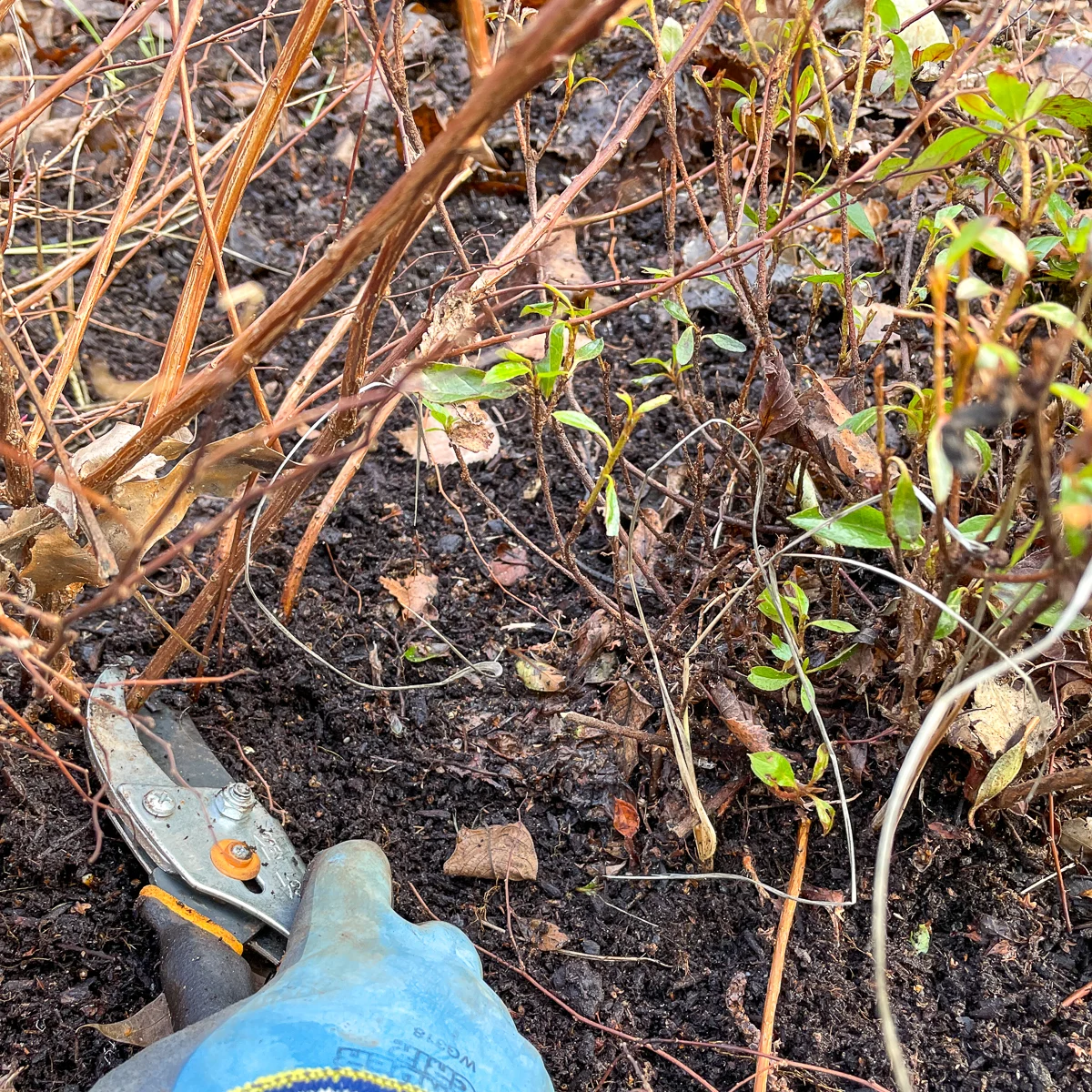
Evaluate the overall shape
As you prune, take a step back every once in a while and evaluate the overall shape of the shrub. You can always take more off, but you can't put it back on!
Eventually, that tangled mass of sticks turned into three defined spirea shrubs that are all ready to put on new growth and bloom this year!
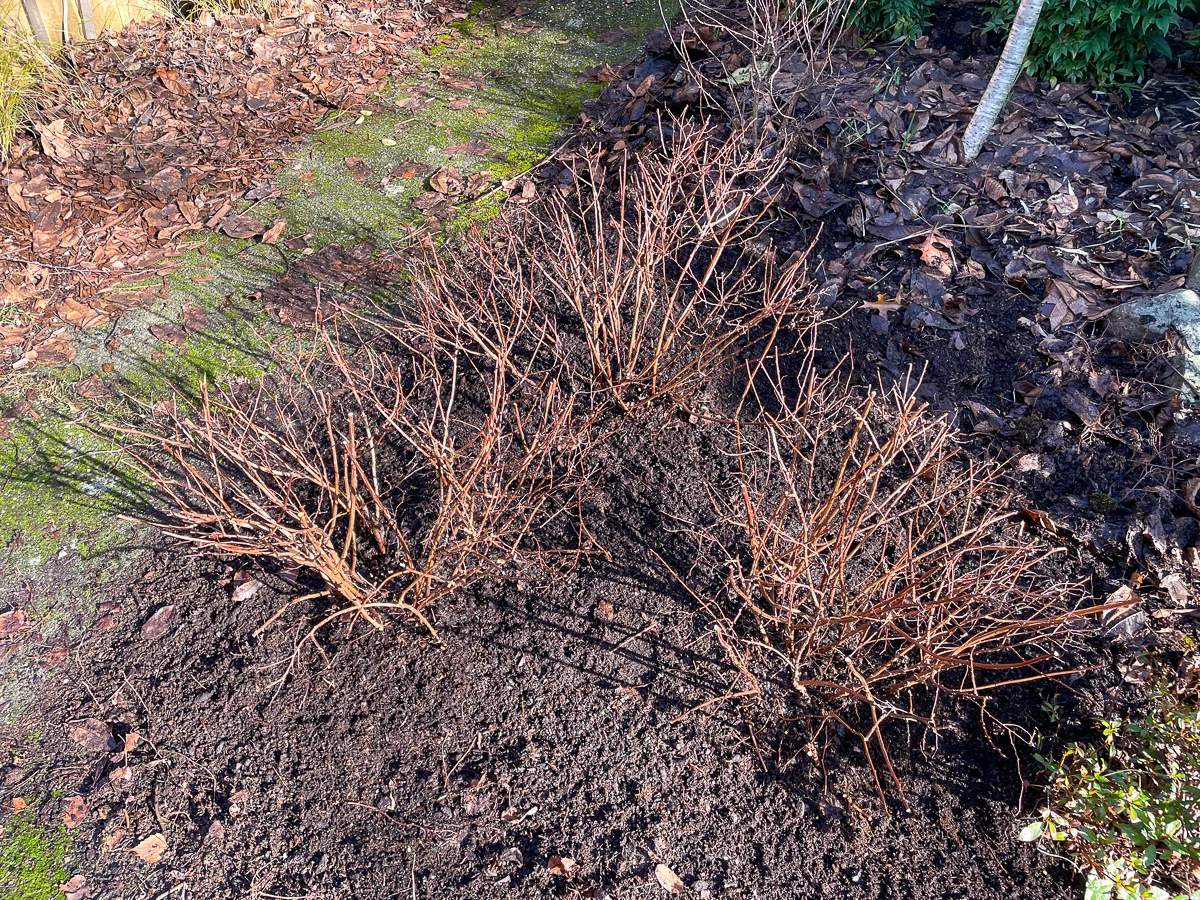
It was so nice to get out in the garden in January and tackle a few pruning jobs! I can't wait to see this area come alive with leucojum and daffodils soon!
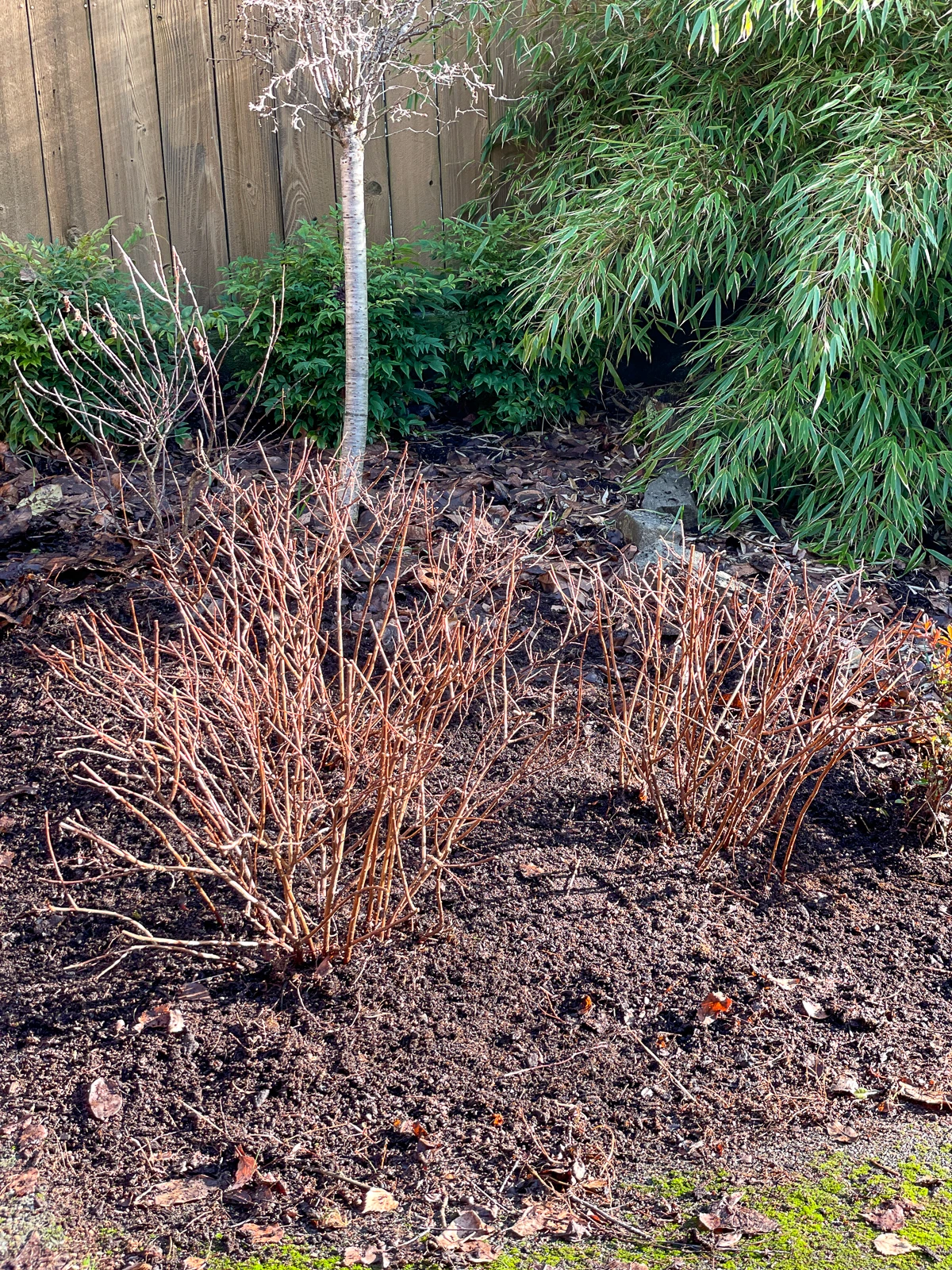
Check out these other pruning tutorials!

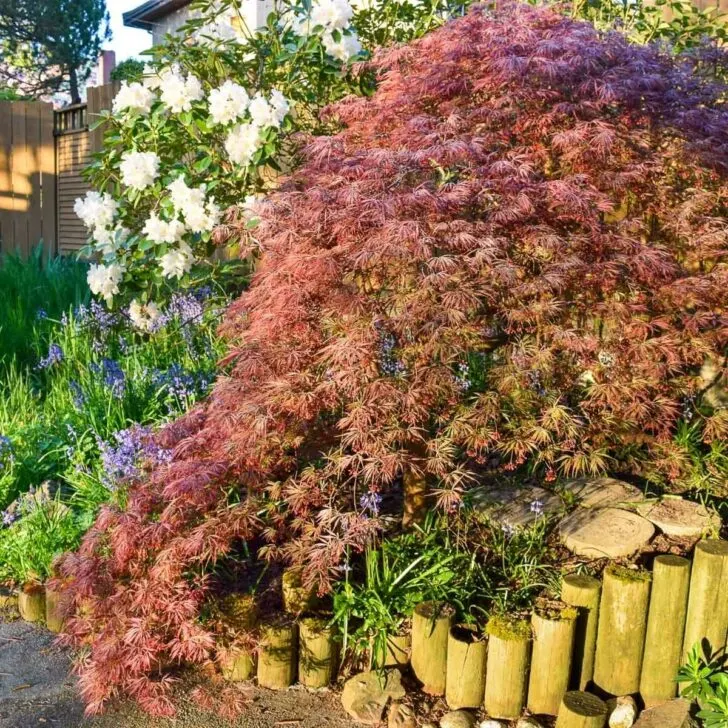

Mike Hendricks
Tuesday 4th of April 2023
Good info on pruning the Japanese spirea, but I didn’t see the same detail for the old fashioned spirea. In my experience, as the shoots on my spirea aged they would eventually turn from brown to grey and stop blooming. I would cut these at ground level. This pruning encouraged the plant to put on new shoots growing from the base, which helped maintain the graceful look of the plant.
Vineta Jackson
Tuesday 4th of April 2023
Great tips! Thanks!